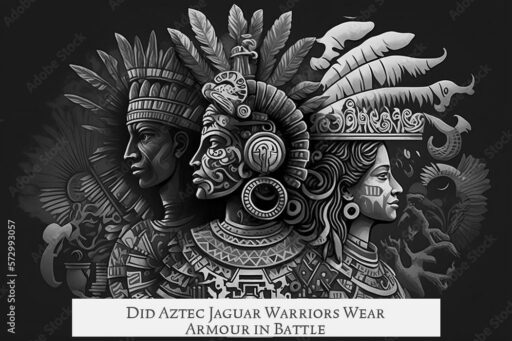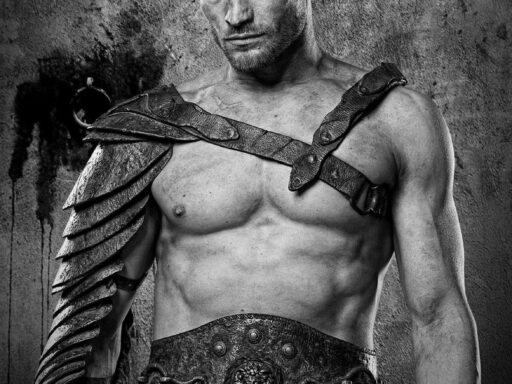Aztec Jaguar Warriors did wear armour, specifically designed to provide protection while allowing mobility and adapting to the Mesoamerican climate. Their armour combined thickly padded cotton layers with decorative elements symbolizing their elite warrior status. Contemporary and later sources confirm the existence and effectiveness of this ensemble.
Aztec armour centers around the ichcahuipilli, a quilted cotton garment roughly two fingers thick. This cotton armour acted as a barrier against arrows, darts, and swords. The Anonymous Conqueror noted that arrows and darts “are thrown back without making any wound,” and even European weapons struggled to penetrate it. This defensive layer formed the core of the Jaguar Warrior’s protection.
Above the quilted cotton, Jaguar Warriors wore the tlahuiztli, a war costume crafted from cotton and adorned with feathers. The tlahuiztli displayed jaguar skin patterns but was not made from actual jaguar pelts. Wooden imitations of jaguar heads served as helmets, combining symbolic decoration with practical defense. These wooden helms enforced identity without sacrificing protection. Soldiers also used padded leggings and arm braces, which were likely made of cotton or deer leather.
Shields were commonly used and crafted from thick reeds interwoven with doubled cotton layers. Some shields featured embellishments with precious stones and gold plates, although gold and silver likely signified rank or command rather than serving as effective armour. The softness of these metals suggests decorative or status roles rather than actual protection. Some scholars speculate that reports of metal armour might have confused gold or silver with tougher copper or bronze alloys.
| Armour Components | Description |
|---|---|
| Ichcahuipilli | Thick, quilted cotton armour two fingers thick, core defensive layer. |
| Tlahuiztli | Feather-decorated cotton war costume with jaguar skin patterns. |
| Helmet | Wooden helmet shaped like a jaguar head, symbolic and protective. |
| Leggings and arm braces | Padded cotton or deer leather for limb protection. |
| Shield | Thick reed and cotton construction, sometimes adorned with precious metals. |
Visual evidence from codices supports the descriptions, but depictions of Jaguar Warriors themselves are less detailed. The Codex Mendoza illustrates general Aztec war suits, while the Florentine Codex contains some images of Jaguar Warriors. Both sources align with written accounts describing their layered cotton armour and wooden helmets.
These features reflect a strategic balance. The armour protected warriors from native weapons and some European arms without encumbering them. Portraying the ferocity of jaguars symbolized their prowess. However, Jaguar Warriors were never shirtless; they used substantial padding to ensure safety. The armour fit the environment and warfare style, emphasizing mobility and resilience.
Armour sometimes included reinforcements of leather, wood, and possibly metals like copper or bronze. Most common foot soldiers wore simpler cotton helmets shaped conically, while elite warriors like the Jaguar Warriors had distinctive animal helmets. The use of feathers and painted cotton costumes also conveyed rank and identity, important in battlefield hierarchy.
“The armour which they use in war are certain loose garments like doublets made of quilted cotton… neither arrows nor darts pierce them… even with swords it is difficult to penetrate.” – Anonymous Conqueror
This statement from early Spanish observers underlines the practical effectiveness of Aztec cotton armour against both native and foreign weapons.
- Jaguar Warriors wore cotton-based armour reinforced by thick quilting called ichcahuipilli.
- The tlahuiztli covered the cotton padding and featured jaguar motifs via feathers and paint, not real jaguar skins.
- Wooden helmets shaped like jaguar heads provided identity and additional defense.
- Shields built with reeds and cotton overlays effectively blocked most projectile weapons of the era.
- Gold and silver decorations served symbolic or command-related functions rather than practical protection.
- Visual sources such as the Codex Mendoza and Florentine Codex offer partial but supporting illustration.
- Armour allowed mobility and was suited to climatic conditions, combining form and function.
In conclusion, Aztec Jaguar Warriors definitely wore armour. It consisted of a padded cotton base layered with decorated war costumes and supplemented by wooden helmets and protective gear. This ensemble resisted piercing weapons effectively and displayed elite status through symbolic decoration.
Did Aztec jaguar warriors wear armour during battle?
Yes, jaguar warriors wore armour. They used thick quilted cotton armour called ichcahuipilli, which protected them from arrows and swords.
What materials were used for jaguar warrior armour?
The armour was mainly made of padded cotton. It was decorated with feathers and included wooden helmets shaped like jaguar heads.
How effective was the jaguar warrior armour against weapons?
The cotton armour could resist arrows, darts, and swords. Some European weapons had difficulty penetrating it.
Did jaguar warriors wear metal armour or decorations?
They sometimes had decorations made of gold or silver, but these metals were likely for status, not protection. The metal might also have been copper or bronze.
How do we know what jaguar warriors’ armour looked like?
Descriptions come from Spanish accounts and Aztec codices. The Florentine Codex shows jaguar warriors wearing cotton and feather costumes with wooden helmets.




